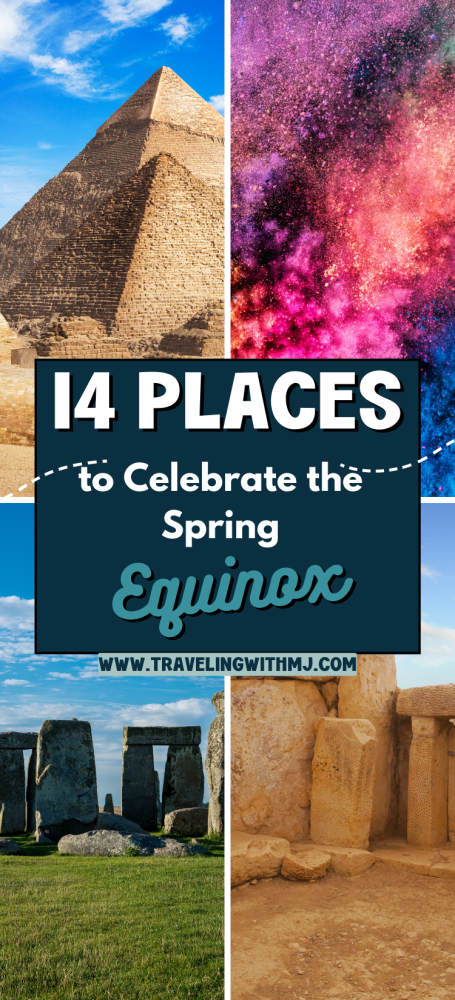The spring equinox is the time of year when the sun lies directly above the equator, meaning that the length of day and night are equal. It is also referred to by other names, such as Ostara equinox and the vernal equinox.
The Spring Equinox falls on different days each year, although it is usually around the same time. In 2024, it lands on March 19th in the Northern Hemisphere (at 11:06 pm EDT, to be exact), and September 22nd in the Southern Hemisphere (7:43 am EDT). It marks the beginning of spring in the Northern hemisphere and the beginning of fall in the Southern Hemisphere. The confusion between spring and fall with the hemispheres is why it’s sometimes easier to just refer to it as the vernal equinox (even though vernal means spring, it sometimes sounds less confusing).
For thousands of years, ancient civilizations have held spring equinox celebrations. Spring celebrations around the world make traveling for the equinox a wonderful experience. No matter where you are, you’ll find spring festivals, celebratory events, and lots of fun ways to honor the arrival of spring.
So if you’re thinking of traveling around this time, here are the best places and the different ways to celebrate the spring equinox!
- Where to Celebrate the Spring Equinox
- Chichen Itza and Dziblichaltun, Mexico
- Stonehenge, UK
- Udaipur, India
- Loughcrew, Ireland
- Mnajdra Temples, Malta
- Ahu Akivi, A Line of Seven Moai, Easter Island
- Angkor Wat, Siem Reap, Cambodia
- Machu Picchu, Peru
- Woodhenge Monks Mound, Cahokia Archeological Site, Mississippi
- Rovaniemi, Finland
- Chaco Canyon, New Mexico
- Giza, Egypt
- The Sun Dial of Basilica San Petronio, Bologna, Italy
- Japan (multiple locations)
- Final Thoughts on Places to Celebrate the Spring Equinox
- For Pinterest
Where to Celebrate the Spring Equinox
Chichen Itza and Dziblichaltun, Mexico
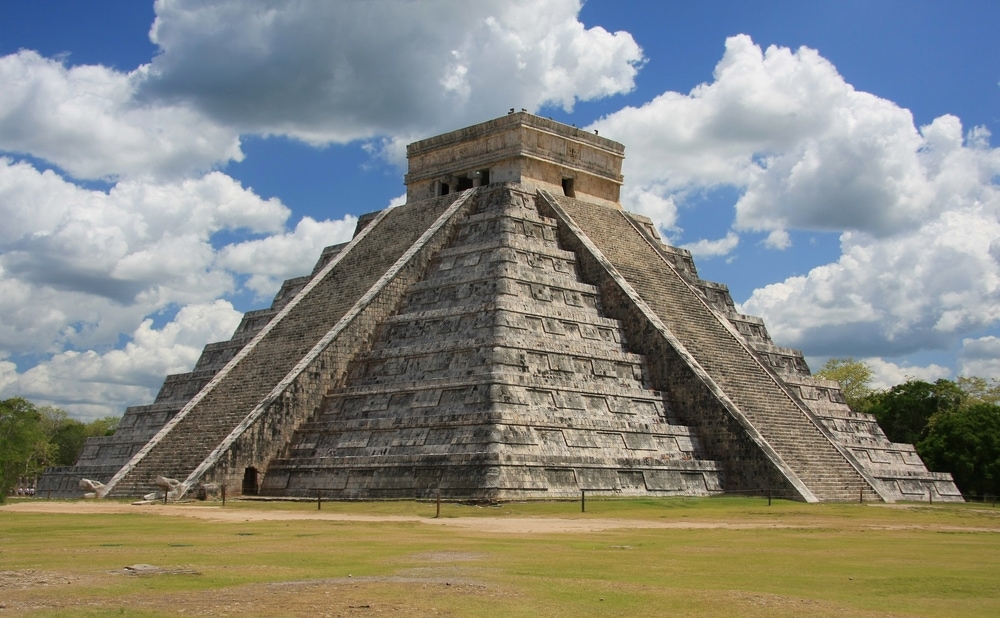
Chichen Itza is the world’s most famous Maya archeological site and is one of the seven wonders of the world. Each year, approximately 25,000 visitors flock to Chichen Itza to celebrate Spring Equinox.
When the Toltec warriors arrived at the Maya Peninsula, they founded the Itza tribe. The Toltec’s main god, Quetzalcoatl, was adopted by the Maya who they called Kukulcan. It is believed that Kukulcan once told the Maya people that one day a feathered serpent would come down to the Earth and speak to them.
During the Spring Equinox, somewhere between 4-6 pm, a special phenomenon occurs. When facing the steps of the Pyramid of Kukulkan at Chichen Itza from a given angle, an illusion of light casts a shadow in the shape of a serpent descending the steps of the pyramid. This fascinating and ancient optical illusion is what draws thousands of people to the historic site every year for the spring equinox.
Another popular Maya site to celebrate Spring Equinox is Dzibilchaltún, at the Temple of Seven Dolls, where another marvel of incredible accuracy by Maya architects can be witnessed. During sunrise on the Spring Equinox, you can witness the sunshine through the portal in the Temple of the Seven Dolls, showing once again how Maya civilizations incorporated an understanding of astronomy into their architecture.
Dzibilchaltún is 85 miles from Chichen Itza, so it’s not possible to catch both on the same day. However, the illusions can be witnessed the day before and after the equinox, so you can visit them on different days to witness each wonder.
One of the popular things to do in Tulum is a day trip to Chichen Itza, so that’s another option.
Details for Chichen Itza: Yucatan, Mexico | Official Website
Details for Dzibilchaltún: 97308 Yucatan, Mexico | Official Website
Stonehenge, UK
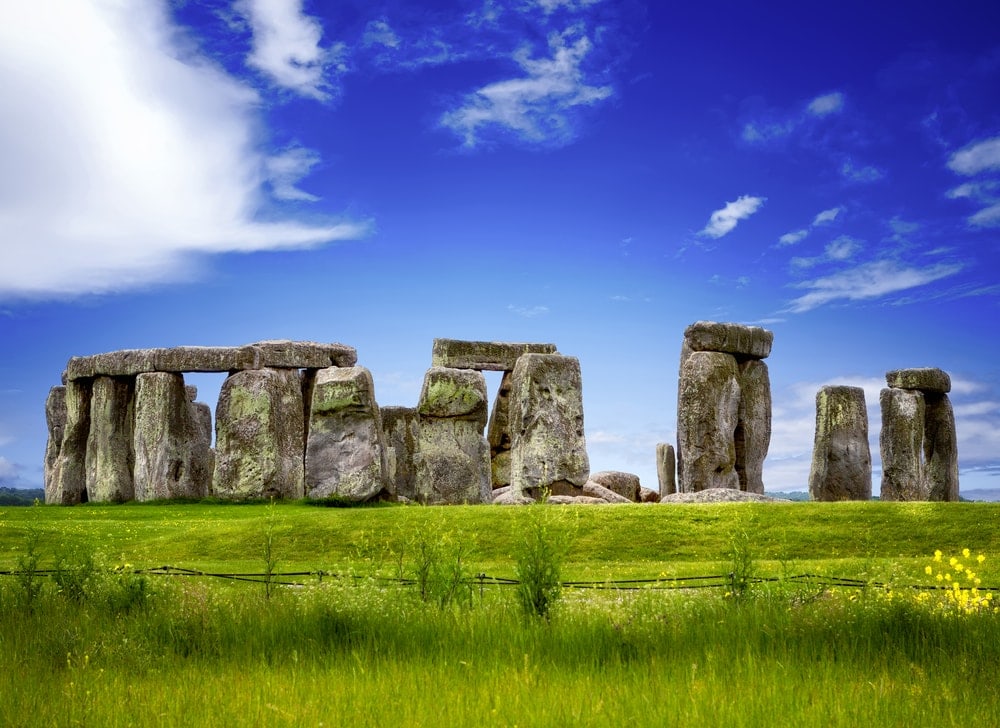
For centuries, Druids and Pagans have gathered at Stonehenge in England for a spring equinox ritual – watching as the sun rises above the stones. It’s a very old tradition that brings England’s oldest tribes together to honor the coming of spring.
For many ancient civilizations, marking the passing of time has been an important part of their history and culture. In fact, many historians believe that marking the passage of time is one of the reasons why Stonehenge was built – to be a monument aligned with the movement of the sun.
To Pagans, the Spring equinox celebration is about giving thanks to the ancient Saxon goddess, Eostre, who represents new beginnings and fertility. For Druids, the equinox marks the awakening of the Goddess of Spring and the life of nature.
Usually, a few hundred people will gather for spiritual and ancient spring celebrations and traditions. Regardless of spiritual beliefs, it’s remarkable to witness.
Details: Stonehenge, Salisbury SP4 7DE, United Kingdom | Official Website
Udaipur, India

India is a vibrant and colorful country, but it’s at its most colorful during Holi – also known as the festival of color or festival of love, which marks the beginning of Spring. Holi begins two days before the Spring equinox and runs for two days, with the last day falling on the Spring Equinox. If you’re traveling to India around this time, you can expect festivities to last for the entire two days.
Holi is a festival that celebrates the beginning of Spring, and many religious ceremonies are held across the country to give blessings for a good spring harvest. It is a time of love, laughter, play, and most notably, a time to throw colored paint and water around in the street. Compared to other cultures around the world, the communities in India often celebrate the start of spring in a loud and vibrant fashion.
While Holi is celebrated all over India, visiting during the Holi period can be overwhelming for many tourists, especially if you’re not looking to get covered in paint. For a less frenetic celebration, try visiting the city of Udaipur.
Udaipur is the City of Palaces and lakes, and the home of the Indian Royal Family. On the first day of Holi, the descendants of the royal family will light a bonfire at the City Palace. This will be followed by a colorful display of folk dancers (known as Gair) and musicians who perform around the bonfire. There is also a parade of ornately decorated elephants, horses, and camels that journey from the Shambhu Niwas Palace to the Manek Chowk royal residence.
After the parade, the celebration at the royal palace ends with amazing fireworks. During Holi, everyone, locals and tourists, are allowed to enter the City Palace.
The second day of Holi is celebrated in the way you might expect, with water and paint clouding the streets. Be careful when walking the streets that day, as you are likely to become part of the festive fun!
Details: City Palace, Old City, Udaipur, Rajasthan 313001, India
Loughcrew, Ireland
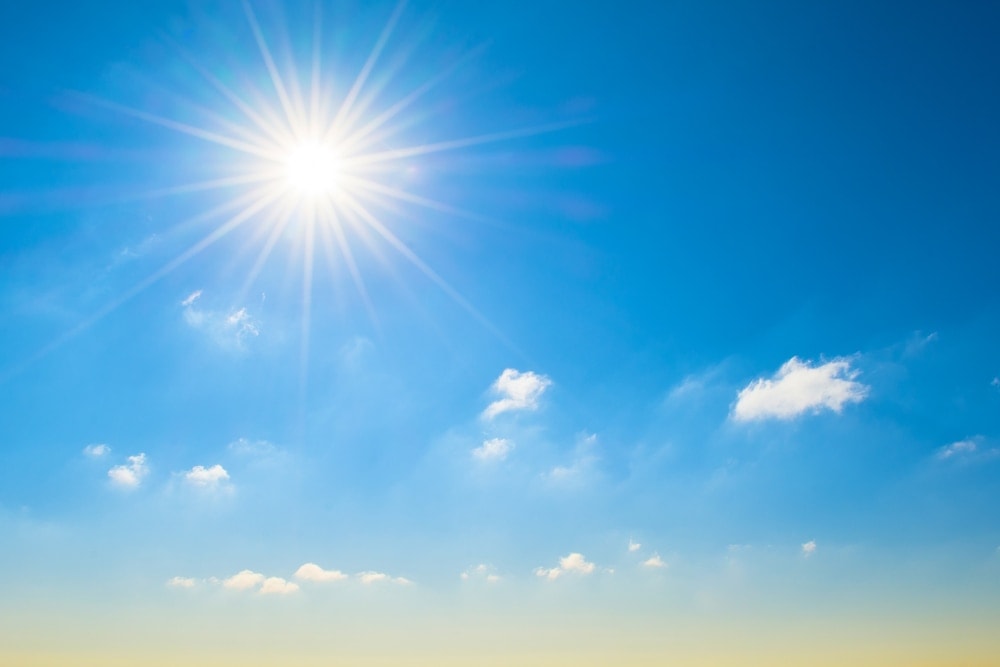
At Carnbane East, Loughcrew, Ireland, on the morning of the Spring and Autumn Equinox, the rising sun illuminates the passage and chamber of Cairn T, one of the remaining twenty ancient tombs in Carnbane East.
The sunlight is shaped by the stones of the entrance of the tombs, lighting up the back wall, a phenomenon that only happens this time of year. The spectacle lasts for only around 50 minutes, and because the site is protected, only groups of five or six people can fit in the tombs at each time. If you want to experience this official start of the spring season, you’ll need to get to the site at least an hour before sunrise to allow time to walk to the tombs. Check your phone app to make note of the exact time of the sunrise, it’s usually around 7:30-ish.
Find more tips for planning a trip to Ireland here.
Details: Loughcrew Cairns, Corstown, Oldcastle, Co. Meath, Ireland | Official Website
Mnajdra Temples, Malta
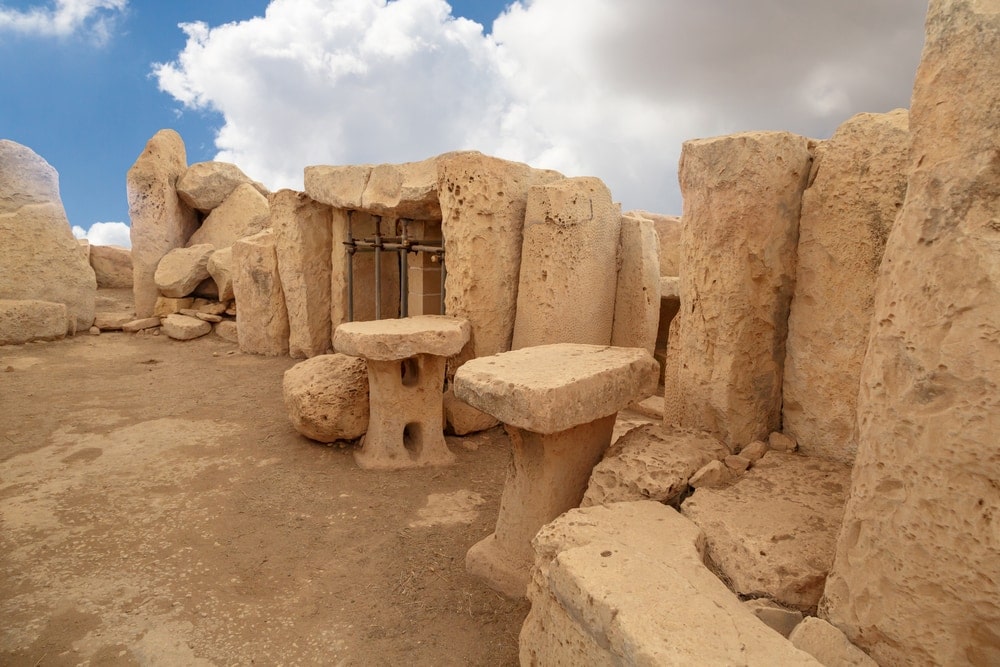
Another temple that gifts visitors with a natural light phenomenon during spring equinox is the Mnajdra temples in Malta. At this prehistoric landmark, the first rays of the sun on the Spring Equinox project themselves through the South Temple’s main doorway, a sight that is only possible to witness this time of year.
It is not known whether this phenomenon was intentional, but historians believe it is very probable that it was. In prehistoric agricultural civilizations in Malta, farmers often observed the motion of the stars, moon, and sun, and noted that there were clear signs of changing seasons that created the best time to plant seeds and get ready for new crops.
Today, thousands of visitors visit the Mnajdra temples in Malta to witness the phenomenon and to welcome a new season.
The temple complex is open every day from 9 am-5:40 pm. Tickets can only be purchased in person from the ticket office.
Details: Qrendi, QRD 2502, Malta
Ahu Akivi, A Line of Seven Moai, Easter Island
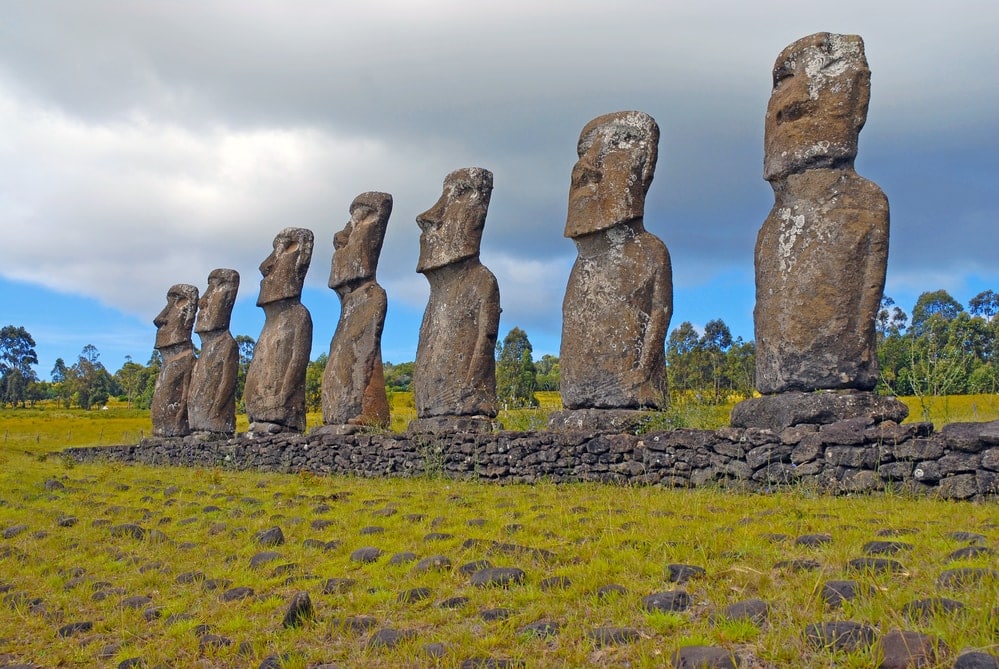
Ahu Akivi is a sacred site on the Chilean island of Rapa Nui, also known as Easter Island. The site has seven moai statues, which are also a 16th-century celestial observatory, considered by the ancient civilizations of Rapa Nui to be the reincarnation of important kings of their clans. The Moais are believed to protect nearby villages and bring prosperity to their people.
During the Spring Equinox, the statues exactly face the sunset. It’s an astronomically precise phenomenon that can only be seen from this exact location on the island.
To see the Ahu Akivi you must purchase an entrance ticket for the Rapa Nui Parque Nacional, which must be purchased in person at the park’s entrance.
Details: Easter Island, Valparaíso, Chile
Angkor Wat, Siem Reap, Cambodia
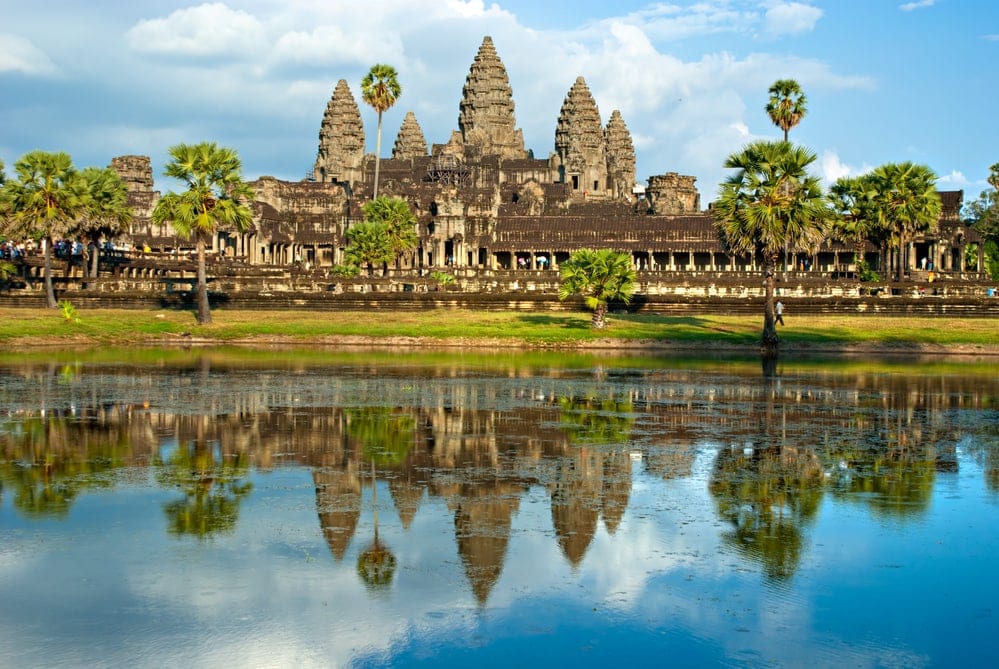
Angkor Wat is another special monument to visit during the Spring Equinox. It is the first Hindu, then subsequently Buddhist, temple complex in Cambodia, built in the early 12th Century AD by the Khmer King Suryavarman II. The huge stone complex is nestled deep in the jungles outside the city of Siem Reap and is an iconic spot to catch the sunrise all year round.
However, on the morning of the spring equinox, visitors can witness the sun rising up the side of the central tower of the main temple, where it eventually shines like a halo behind the monument.
Sunrise is usually around 5.00 am, but visitors will start entering the park as early as 4.30 am to get a good view. Tickets for Angkor Wat cannot be purchased online, you must go to the ticket office located on Road 60, about two and a half miles away from the center of Siem Reap. This special moment attracts large crowds of both locals and tourists. If you’re planning to visit, get there early.
Details: Krong Siem Reap, Cambodia
Machu Picchu, Peru
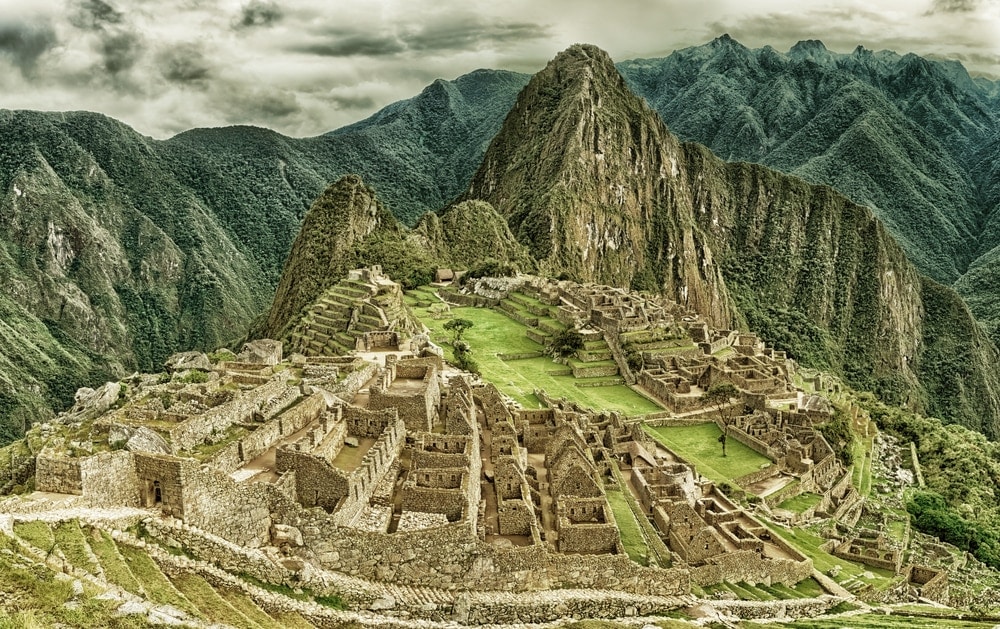
Unlike the destinations mentioned previously, Machu Picchu is located in the Southern Hemisphere, which means it celebrates the vernal equinox on September 22nd, rather than in March.
Since the ancient Inca period, Incas have celebrated the spring and autumn equinox at the site of Machu Picchu, especially at the Intihuatana stone. At noon on the respective dates, the Intihuatana stone (which means “hitching post of the sun”) casts no shadow. The phenomenon of the Intihuatana stone is no accident. The carved 26-inch-tall stone faces a 13-degree northward angle. This means that just for a moment, on the days of the spring and autumn equinox, the shadow of the sun disappears under the stone.
Visiting Machu Picchu, at any time of year, takes careful planning and consideration. Because there is a limit to the number of people who are permitted to visit the site each day, permits should be bought at least six months in advance. Despite the limitations, you can expect crowds during the spring equinox.
Tourists flock to Machu Pichu any time of year, but for many believers, the equinox is a spiritual pilgrimage on one of the most sacred days in the Incan calendar. While the Incan civilization dates back centuries, many people still follow these ancient cultures and beliefs.
Details: 08680, Peru
Woodhenge Monks Mound, Cahokia Archeological Site, Mississippi
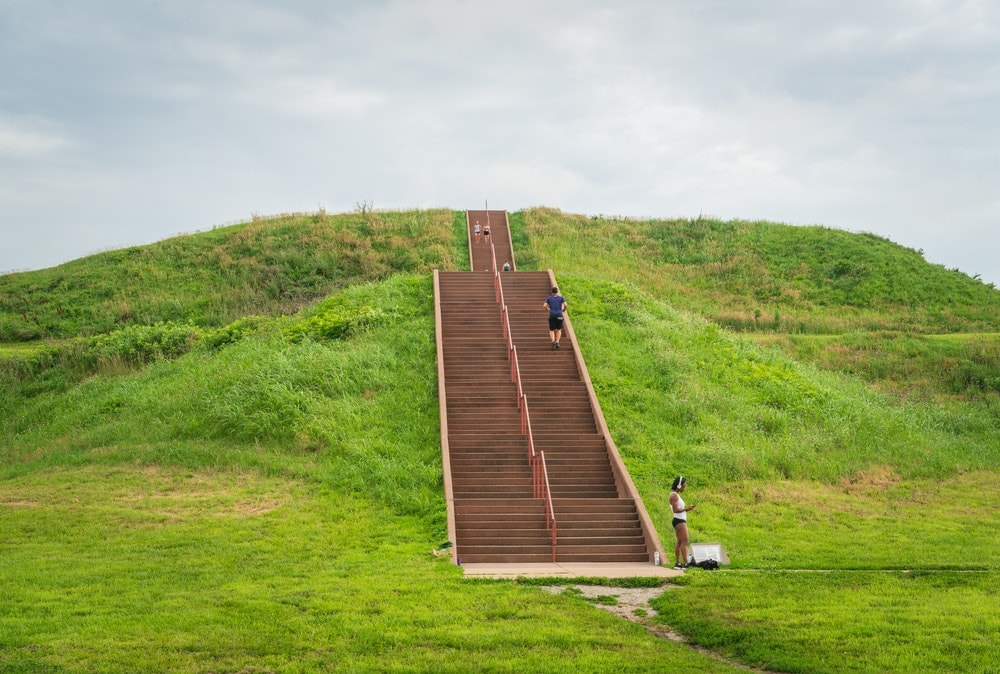
One of the incredible things about the Spring equinox is that it offers the best sunrises in the entire year. One of the best places to see this sunrise in all its glory is from the Cahokia Mounds in Mississippi.
Woodhenge is a series of large timber circles that were erected by ancient Mississippians roughly 2,790 feet west of Monks Mound at the Cahokia archeological site. The Woodhenge timbers were used as a calendar for Mississippians during ancient times. Each year, a Woodhenge Reconstruction is built, where it aligns with the front of Monks Mound, creating an effect that looks like the Mound is “giving birth” to the sun.
On March 22nd, a Spring Equinox sunrise observance event will be held at the Woodhenge Reconstruction at Cahokia Mounds at 6.45 am. There is no entrance fee, but donations are welcome.
Details: Fairmont City, Illinois, United States | Official Website
Rovaniemi, Finland
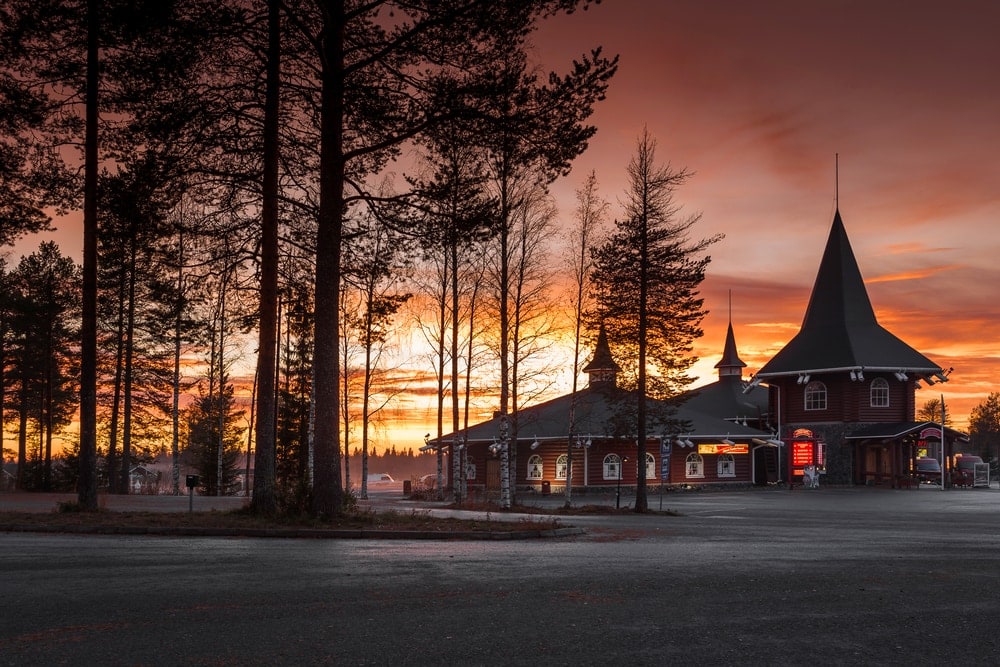
Rovaniemi, the capital of Finnish Lapland, is one of the most unique places to celebrate the spring equinox. For Finland, winter nights are long and arduous, which is why the welcoming of Spring Equinox is so important for the residents here. It’s not just the beginning of longer days, although that is certainly welcome, it’s also the start of astronomical spring,
This is also a time when the Northern Lights are at their most prominent. It’s said that there are more auroras around the spring and autumnal equinox than at any other time of the year. Auroras are visible to the naked eye, but they look most incredible when reflected in the waters of the lake in Rovaniemi. If you can, try and get out of town to an area with no street lights, and you will see the Northern Lights at their best.
Chaco Canyon, New Mexico
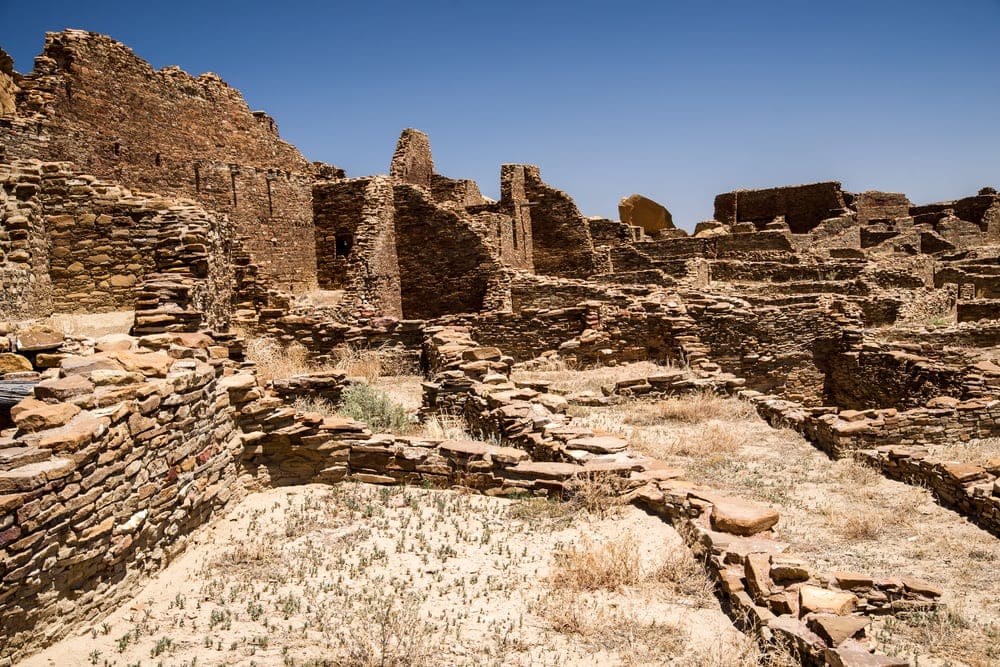
Chaco Canyon, New Mexico, was once a thriving town, home to the Anasazi people around the years 800-1200. These ancient civilizations built stone houses, with multiple stories and large rooms, as well as impressive kivas (meeting places).
On the morning of the Spring Equinox, as the sun slowly rises up the canyon walls, it shines directly through the windows of Casa Rinconada, the largest kiva in the park. Whether Casa Rinconada was purposely designed this way is unclear, but it is a marvel to witness.
Those wishing to visit Chaco Culture National Historical Parks for Spring Equinox will need to purchase a park entrance fee before visiting. Gates open just before sunrise at around 6.30 am.
Details: New Mexico, United States | Official website
Giza, Egypt
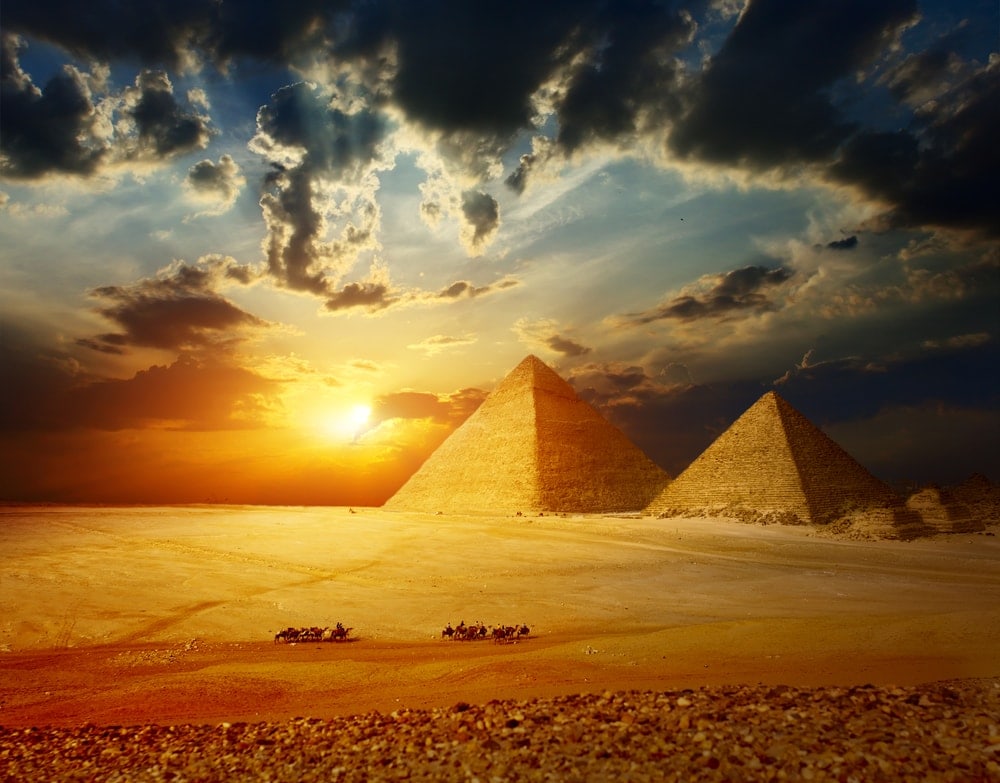
One of the seven wonders of the world, and the beating heart of Ancient Egypt, the great pyramids and Sphinx of Giza also have displays of light during the Spring Equinox.
At sunrise, the sun faces directly at the Sphinx, lighting up its entire face for only one day of the year. At sunset, again if you face towards the Sphynx, you’ll observe the sun as it sets directly on the Sphinx’s right shoulder. From this angle, the sun also shines on the southern corner of the Pyramid of Khafre, located directly behind the Sphinx.
If you plan to visit Egypt during the spring equinox, it’s also a great time to check out the Giza pyramid complex. The entrance fee of 200 Egyptian Pounds (approximately $13, depending on the exchange rate) at the park entrance.
Details: Al Haram, Nazlet El-Samman, Al Giza Desert, Giza Governorate, Egypt
The Sun Dial of Basilica San Petronio, Bologna, Italy

In 1576, Ignazio Danti, a Perugian Dominican professor of mathematics at the University of Bologna was commissioned to design the first sundial at the Basilica San Petronio in Bologna, Italy. The sundial ran across the central nave of the church and was illuminated by a hole in the wall.
Unfortunately, Danti’s work was destroyed in 1653 making the sundial unusable, but astronomer Gian Domenico Cassini was commissioned to create a new and greater solar instrument. He created what is now called the Bologna meridian line, the longest internal functioning sundial in the world. Cassini’s modifications changed from placing the hole in the wall like in Danti’s design and moving it to the top of one of the vaults of the left nave. On the floor, there is a brass line that leads up to a marble slab, with the words “equinox” written on it in Latin.
During the Spring and Autumn equinox, a bright circle of sunshine can be seen traveling across the floor where it rests at the equinox spot at twelve noon.
Cassini not only made the world’s biggest sundial, but he paved the way for astronomy to prove the existence of seasons. His work resulted in turning the cathedral into an observatory, offering a prime example of how religion and science can coexist harmoniously side by side.
Details: Piazza Galvani, 5, 40124 Bologna BO, Italy | Official Website
Japan (multiple locations)
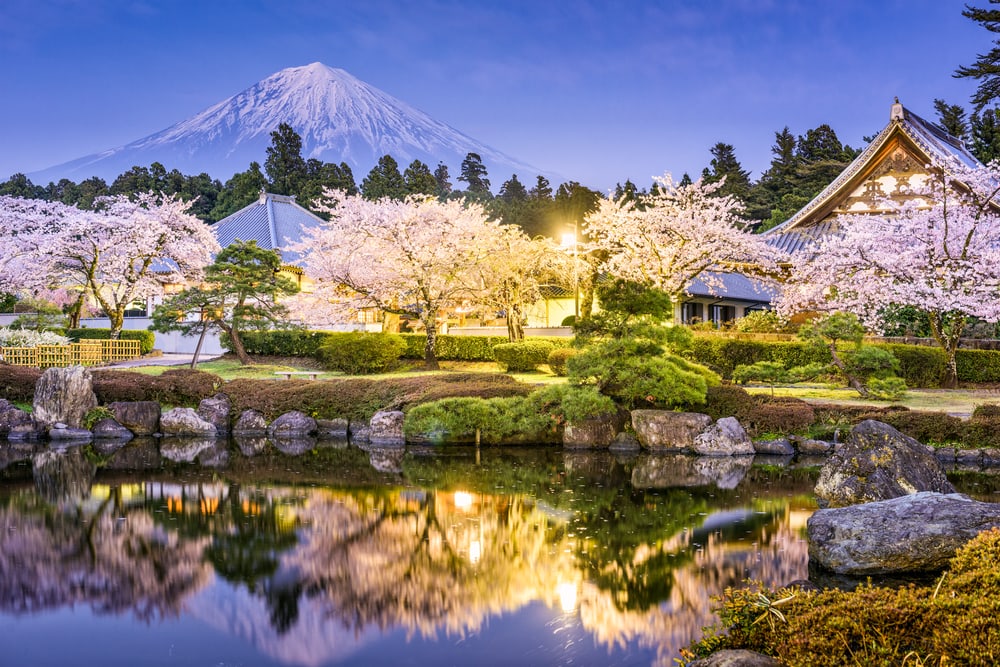
Shunbun no hi is a national holiday in Japan celebrating the vernal equinox and welcoming the beginning of spring. It is also the mid-point of a 7-day Buddhist holiday celebration.
Celebrated throughout the country, traditions include hanami (cherry blossom viewing), botamochi (rice cakes covered in sweet red bean paste) and sakura mochi (light pink glutinous rice with a filling of sweet red bean paste).
The holiday is a time to honor departed loved ones, and often involves visiting graves and cleaning gravestones, setting flowers, and prayers.
For the living, it’s a time for housecleaning (literally and figuratively), preparing for a new and refreshed season of life.
Details: Celebrations throughout the country.
Final Thoughts on Places to Celebrate the Spring Equinox
There are many places around the world to celebrate the spring equinox, too many to include all of them in this list. The selections on this list were chosen for special phenomena that occur there, and of course, for their historic significance to civilizations from around the world.
Wherever you decide to celebrate the spring equinox, make sure to be respectful towards the locals, who not only visit these sites to see the amazing natural phenomena, but are also celebrating the equinox as part of their spirituality, religion, or long-standing cultural traditions. As a tourist, we must observe and not interfere with those important cultural celebrations without invitation.
For Pinterest
Save to your favorite Pinterest boards to create a plan to celebrate the next Spring Equinox.

